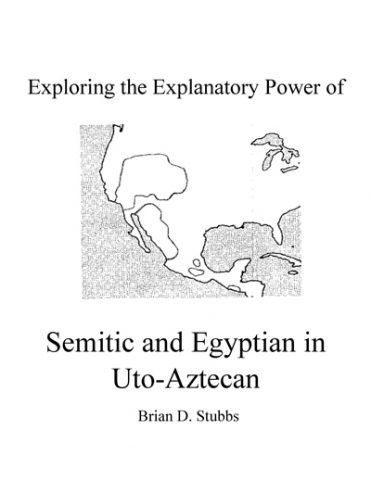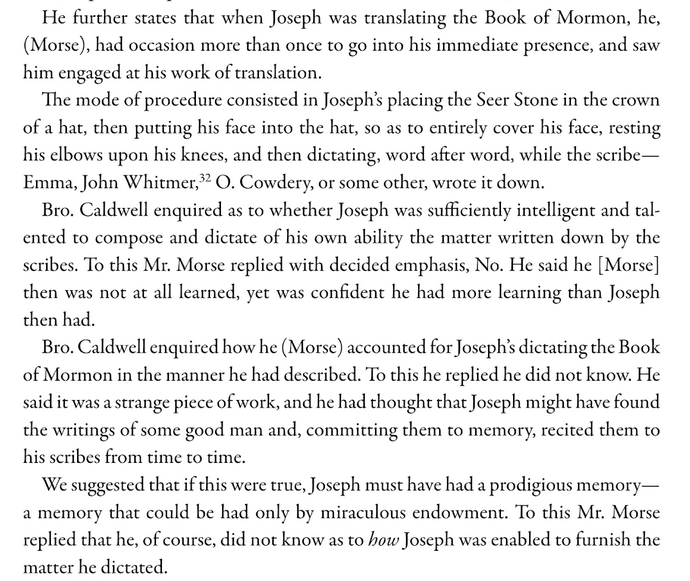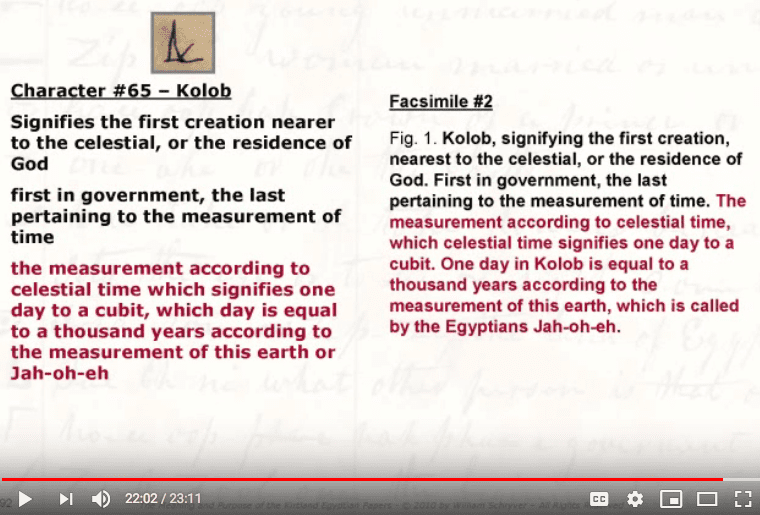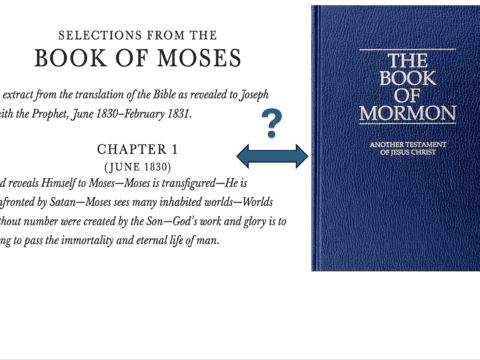An LDS Website, Gerald Smith’s LDS Evidences, provides useful information in responding to an interesting question: Did Joseph Smith copy the names “Moroni” and “Cumorah”? It is interesting that the capital of the obscure Comoros Islands (sounds close to “Cumorah”) is MORONI. It’s a fact the nearly every Ken-Jennings-wannabe farmboy savant is bound to know, so doesn’t it stand to reason that Joseph Smith would have known this? Finally, we’ve got solid proof that the Book of Mormon was plagiarized.
Well, not so fast. Gerald Smith’s response points out that Moroni did not become the capital until 1876. It appears that maps and gazetteers of Joseph’s day (which he probably never had access to anyway) often neglected the Comoros Islands, and didn’t show Moroni at all. The case for plagiarism doesn’t make much sense.
On my mission in Switzerland, I ran into a couple of Italians with Moroni as their last name. (No, I didn’t accuse them of plagiarizing from the Book of Mormon.) It was a reminder of how similar words can crop up by chance in various parts of the world. Coincidences happen – and it was fun knocking on Moroni’s door.
When two names seem to match, some sort of plausible connection or nexus still needs to be established before one can assume there is any relationship.
Now if you want to explore another interesting match, how about the ancient Mayan city Lamanai in Belize? (Sounds like Lamoni, a Lamanite king in the Book of Mormon.) I read somewhere that is one of the few Mesoamerican cities that has kept its ancient name, but I’m not sure about that. Is this another chance coincidence?
Update, March 2006:On the issue of Lamanai, I have received email with an interesting quote from the Journal of Field Archaeology:
Our choice of the site for intensive investigation was based on the presence there of a 16th-century secular Catholic church, the existence of which was first noted by Castells, who incorrectly identified the structure as Pre-Columbian. Castells’ description of the church was, unhappily, the basis for Thompson’s mention of a structure with round portal columns at the site, possibly reflecting Central Mexican influence in Western Belize. Though the church had been the source of some confusion, its presence demonstrated that Lamanai was inhabited in early historical times, and the possibility clearly existed that the occupation in that period represented the upper end of a continuum from the Classic (3rd to early 10th centuries A.C.) or earlier. There was ample evidence, in the form of obviously complex, large structural remains, to indicate that the site had probably been an important center during the Classic, so that excavation could be expected to provide insights into developments in the Central Maya Lowlands over a considerable period. Though the locale is generally known in Belize as Indian Church, a name apparently coined in the early 19th century, Lamanai is in fact one of the very few Maya sites for which the ancient name is recorded. It appears on a church list of 1582, and the site was visited and very sketchily described by Fathers Bartolome de Fuensalida and Juan de Orbita in 1618. (David Pendergast, “Lamanai, Belize: Summary of Excavation Results, 1974-1980,” Journal of Field Archaeology, Vol. 8 No. 1, [1981) pg. 29-30)
David Pendergast was involved in excavations at Lamanai beginning in the 1970s.












I read that lamanai translated to hebrew is Lamanite. Any word on that?
The antis think this is some of the best evidence against the Book of Mormon – and it’s largely based on hearsay and trumped-up rumors. Show me something in print that Joseph Smith had access to that showed Comora and Moroni on the same page. Moroni was not the capital until long after the Book of Mormon was published and was generally not mentioned. In fact, Comoros wasn’t mentioned much either. Show some evidence.
In fact, these names were known in Joseph’s day, mainly due to adventure stories about the pirate Captain Kidd (buried treasure anyone?) who visited the Comoros. Most damning is the fact that at the time the Book of Mormon was written, the name of the country was spelled Camora (or sometimes Comora). When the original Book of Mormon was published, it too spelled Cumorah “Camorah.” So people who think in terms of odds, statistics and chance find it hard to believe that Moroni, Camora/Camorah and buried treasure have absolutely no connection.
I wonder if someone who had read from the Book of Mormon had picked the name of that town off the back of his head.
Anonymous, you make claims about Comoros and Moroni that you do not substantiate. I agree with the first Anonymous. Show me a document that has both Comoros and Moroni in it, which Joseph Smith could have had access to, and we can begin to discuss this possibility. If it really was common knowledge that Moroni was a settlement in Comoros, there will surely be a record of that knowledge somewhere. Until that record is found, it's just speculation.
JDD, I think was the second Anon was trying to say (if they don't answer for themselves) is that when you add the three components together (Moroni, Camora/Camorah, and buried treasure), you begin to need account for the coincidences. As was stated above in the original post, just the one name alone (Moroni OR Camora) would be harder to use as conclusive evidence of fraud. When you put the names Moroni and Camora/Camorah together, it becomes much more difficult. They're arguably the two most important names in the Book of Mormon/Joseph Smith story. NOW, add in the third element of buried treasure (by Captain Kidd and Moroni) and it becomes ludicrous. At least in my opinion.
There ARE records (see the Joseph Smith Papers and contemporary accounts from those both FOR and AGAINST the Smith Family) of Joseph and his family seeking out the lost treasure of Captain Kidd in the New York state area. He had heard the stories of Kidd's exploits and new about his treasure. Kidd was executed for crimes committed near Moroni, Camora Island. So when one sees that the angel Moroni told Joseph about treasure buried in the Hill Camora, you have to stop and say, "What are the odds of these three things being connected with Captain Kidd AND – totally separately! – Joseph Smith?" Because, please remember: One IS historical and the other isn't, other than to the believer. One has physical proof, the other doesn't.
Anon can answer for themself, but that is the way I read his/her posting. I was once a member and this was one (of many) issue that I couldn't argue myself out of.
If your need for documentation is so strong, might I ask where the supporting documentation is for the veracity of the First Vision? Not that it did or didn't happen, but simply why was there not a record of it before 1831? Anywhere? Not a diary entry, family letter, newpaper article, court document, etc. No one has any record of the First Vision until a year AFTER the church was organized. Letters written about the restoration never mention it. His mother and other family members write about the golden plates, but no vision of deity. If you're so concerned about the lack of a document showing Moroni and Camora together, do you have the same concern for your church's lack of documentation? Probably not.
Ultimately, it comes down to belief. Honestly ask yourself what your position would be if someone here DID provide the document you're asking for. Would it change anything for you?
JDD, I think was the second Anon was trying to say (if they don't answer for themselves) is that when you add the three components together (Moroni, Camora/Camorah, and buried treasure), you begin to need account for the coincidences. As was stated above in the original post, just the one name alone (Moroni OR Camora) would be harder to use as conclusive evidence of fraud. When you put the names Moroni and Camora/Camorah together, it becomes much more difficult. They're arguably the two most important names in the Book of Mormon/Joseph Smith story. NOW, add in the third element of buried treasure (by Captain Kidd and Moroni) and it becomes ludicrous. At least in my opinion.
There ARE records (see the Joseph Smith Papers and contemporary accounts from those both FOR and AGAINST the Smith Family) of Joseph and his family seeking out the lost treasure of Captain Kidd in the New York state area. He had heard the stories of Kidd's exploits and new about his treasure. Kidd was executed for crimes committed near Moroni, Camora Island. So when one sees that the angel Moroni told Joseph about treasure buried in the Hill Camora, you have to stop and say, "What are the odds of these three things being connected with Captain Kidd AND – totally separately! – Joseph Smith?" Because, please remember: One IS historical and the other isn't, other than to the believer. One has physical proof, the other doesn't.
Anon can answer for themself, but that is the way I read his/her posting. I was once a member and this was one (of many) issue that I couldn't argue myself out of.
If your need for documentation is so strong, might I ask where the supporting documentation is for the veracity of the First Vision? Not that it did or didn't happen, but simply why was there not a record of it before 1831? Anywhere? Not a diary entry, family letter, newpaper article, court document, etc. No one has any record of the First Vision until a year AFTER the church was organized. Letters written about the restoration never mention it. His mother and other family members write about the golden plates, but no vision of deity. If you're so concerned about the lack of a document showing Moroni and Camora together, do you have the same concern for your church's lack of documentation? Probably not.
Ultimately, it comes down to belief. Honestly ask yourself what your position would be if someone here DID provide the document you're asking for. Would it change anything for you?
Here we have a 1748 map that shows one of the islands of "Camore" and a place on it called "Meroni": http://culturalmormoncafeteria.blogspot.com/2010/10/comore-meroni.html
Oops. It's actually Comore, not Camore. Sorry!
A believing Mormon's need for evidence/ documentation for issues like this is a double standard. I think everyone can say Mormon's are to be admired for their passion and love of Joseph but in this thread here I see them chanting "show some evidence" and probably the most ironic statement a Mormon can utter "until the record is found it's just speculation."
Please guys. Your piety is admirable, but you must start to see the fallacy inherent in your thinking. I am still a member of the church and I love the good influence it has had and continues to have upon me, but I am embarrassed at the number of people who are quick to dismiss evidence if it doesn't support their beliefs and adopt evidence if it does–even though there are no conclusive documents either way.
WAKE UP, PLEASE!
Dave, I agree that we need to be more consistent, bt most Mormons don’t use these interesting connections or coincidental names as proof or evidence. Admittedly, some may attach more significance to these things than they should, but mostly we just find them interesting, and supportive of our already existing faith or belief.
Most anti Mormons however, use them as evidence against the church, or proof that it is all made up. CES letter comes to mind. Places in upstate New York have similar names to Book of Mormon places? Anti mormons: “See, it’s all made up!”
Places in mesoamerica have similar names to Book of Mormon places? Most Mormoms: “Gee that’s cool!” In other words, our position doesn’t require those things to exist.
Significantly, many of the upstate New York place names actually didn’t exist in 1830, yet Runnels kept that part in the 2nd edition of CES letter, even after he knew that they didn’t exist at the time of the BofM publication, because he knew that was an attention getter. Nice.